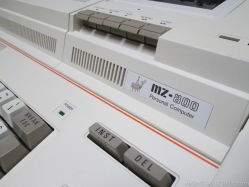
Ikari want to make a bit of clarity of the future of the SD2Snes interface.
Directly from the SD2Snes Homepage:
Progress update & (rough) road map:
In the past weeks, amongst a number of smaller feature requests, I’ve been getting a lot of questions about SuperFX progress. I’ve even seen rumors spread about SuperFX support being cancelled. This is not the case.
SuperFX is the most complex core to implement to date, and it even took me several months to complete Cx4 support. That was before the public release of sd2snes, however, so less people noticed. Rest assured that SuperFX support is still in progress. It will take at least the rest of this year though.
To me, having existing features working properly takes priority. That’s why I’m addressing reported bugs and also minor feature requests which have been in the queue for quite long in parallel to working on SuperFX. I expect there to be 1-2 more releases before SuperFX support is introduced in v0.2.0, not counting critical bug fixes should need for them arise. Since people seem to get annoyed at my love for the Satellaview I’ll put off further work on that until after SuperFX.
There will be a v0.1.5 release shortly, which supports large SRAM properly, fixes sorting of long directory entries, fixes a glitch in SPC playback with S-APU consoles, works properly with non-standard controllers plugged in (e.g. Super Scope), and has more faithful BS-X memory mapping (<- actually finished a couple of weeks ago).
v0.1.6 will probably introduce proper SuperCIC support (allowing to select 50/60Hz from the menu) and maybe rudimentary cheat code support (ROM patching only). Both might be delayed to v0.2.0.
Keep in mind that while I’m continuing work on SuperFX support it helps do something else now and then.
source: sd2snes.de



![C64 Game: Last Mission (Tronic) +3D 101% / My Grand Piano [ntsc/pal] ...](https://www.nightfallcrew.com/wp-content/uploads/2012/10/c64_31_10_2k12-300x225.png?76c919)


















 A new version of the firmware for the interface 1541 Ultimate II is released. This version runs only on the 1541 Ultimate II cartridge (new fpga).
A new version of the firmware for the interface 1541 Ultimate II is released. This version runs only on the 1541 Ultimate II cartridge (new fpga).






Recent Comments